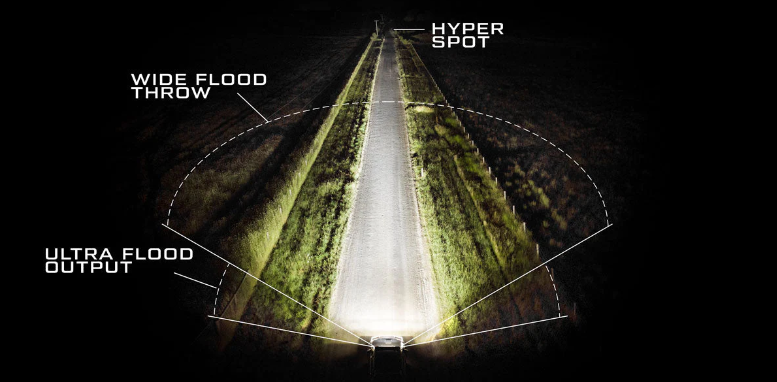We all know that TV is the reigning king of home entertainment. But with TVs getting bigger and prices dropping, more and more people are wondering if they should get a TV or a monitor. Compared to TVs, monitors offer faster response times, higher refresh rates, and less input lag. So which one should you pick? You can make your decision by reviewing each option in this article.
So, let’s get started!

Difference You Need to Know Between a TV and a Monitor
Before making a final choice on a new screen or using a TV as a computer monitor, you should understand the differences between these two types of displays.
Screen Size
The screen size is often one of the most important factors when purchasing a new television. Image quality is primarily determined by panel type and resolution, not just a large screen.
The number of 4K Ultra HD content is increasing, so a new TV should support 4K if you plan to buy one. You could purchase a 32-inch 4K monitor or a 50-inch 4K television for the same amount. The BenQ GW2780 is a high-quality 27-inch monitor with an IPS panel, 2560*1440 resolution, perfect for gamers.
High Dynamic Range
HDR, or High Dynamic Range, provides you with brighter and more vibrant image quality for compatible content. The increased brightness makes viewing more immersive and realistic. Colors in HDR content are also more vibrant, which enhances the realism.
In terms of hardware and content, HDR is widely supported on televisions; however, accurate HDR monitors have only recently become available. Due to the buggy implementation of HDR in Windows, there is not much HDR content for PC.
Resolution of the Screen
Monitors offer a resolution option between Full HD and 4K UHD, called QHD, with 2560×1440 pixels. A widescreen monitor with a 21:9 or 32:09 aspect ratio provides a more immersive viewing experience.
Pixel density is the ratio between screen resolution and screen size, which measures pixels per inch. In general, a resolution of 1920×1080 is sufficient for a 32-inch television but not for a monitor more significant than 24 inches.
Small objects on the screen, like text, appear blurry and smudged due to the low pixel density. Below are the ideal watching distances for different screen sizes/resolutions.
Tv And Monitor Comparison For Gaming – What You Need To Know
Besides considering the points listed above, there are other things to consider when choosing a gaming display.
Refresh Rate
When choosing a monitor or television for gaming, refresh rate is an important specification to consider. Regarding smooth gameplay, higher refresh rates mean more frames per second. The Acer XF250Q gaming monitor is ideal for pro-gamers. Refresh rates equal those of the best gaming monitors.
The fastest gaming monitors can have a refresh rate of 390Hz (540Hz in 2023! ), so you get the smoothest and fastest experience. Typically, TVs run at 60Hz or 120Hz.
Input Lag
The input lag is the delay between the time you make an input on your controller and when it shows up on your screen. Even a delay of 16ms can be too much if you’re a competitive gamer. Input lag should be as low as 8ms on a monitor or TV.
Playing console games on a TV is more enjoyable since you are further away from the screen. However, not all TVs have this feature; even if they do, it’s not always turned on by default. So, be sure to check your TV’s settings before you start gaming.
An Adaptive-Sync
AMD FreeSync and NVIDIA G-SYNC are examples of gaming monitors with a variable refresh rates. In addition to removing all stuttering and tearing, this technology requires a compatible graphics card. You can play PC and console games on Xbox One and Series S/X with AMD FreeSync up to 120Hz. Modern TVs also support AMD FreeSync, NVIDIA G-SYNC, and HDMI 2.1 VRR.
Response Time
Monitors with IPS panels typically respond in 5ms, while TVs with IPS panels respond in 15ms. Moving objects can leave a trail of ghosting behind them. Avoid this by choosing a TV with a low input lag and an IPS panel.
If you can afford one, the response time on an OLED screen is faster than that of a monitor with an LED backlight. There are only 42-inch or larger sizes available. Korean gaming monitors are known for their fast 1 ms response times, making them a favorite choice for gamers.
Conclusion
In summary, there are many differences between a TV and a monitor. It depends on what you value most in your gaming experience. A monitor is probably the way to go if you prioritize visual fidelity and immersion. But a TV might be a better fit if you’re more interested in convenience and ease of use.
Also Check this How to Remove Sticky Tape Residue from Wood, this is very informational website about home Decor and Cleaning.


